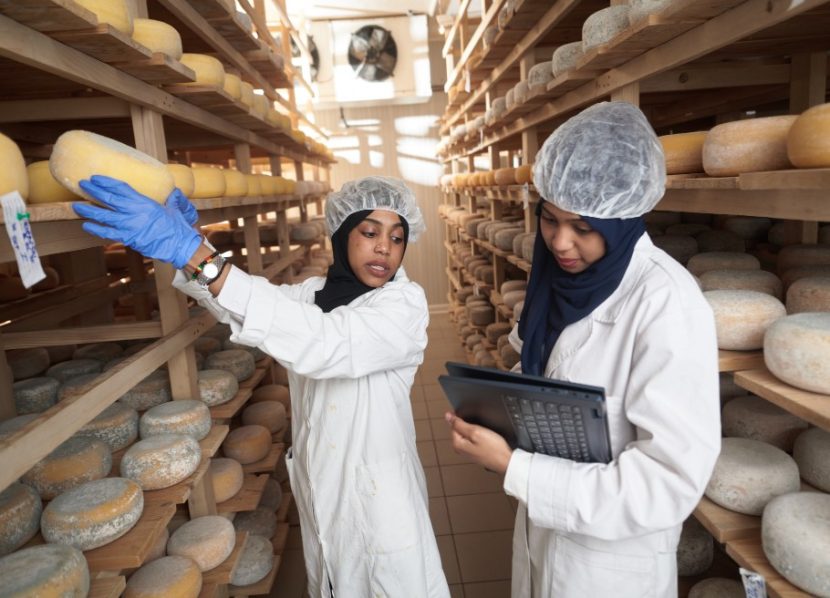Determining Your Return on Investment (ROI) for Food Safety Training
By Akhila Vasan
Do you remember the last time you started a new job? All the hours of onboarding. Maybe some basic admin work, like how to submit your timesheet and mark vacation days, and other more content specific tasks.
The longer you’ve been in your role, the more the training blurs together and becomes more mechanical. Worse, we aren’t trained in new work processes, and we often need figure it out by trial and error. The challenge is, we cannot rely on ‘trial and error type’ decisions in food safety, and definitely not in places such as the plant floor.
Effective food safety training is not just the training we receive at onboarding, but the repetitive training at various times. This is to help us understand the ‘why’ and drive ownership and responsibility for everyday tasks. It also helps us reach out to appropriate resources to get answers to questions, be it our manager, a colleague, or an external organization. For the training to be effective, it has to be human centered, helping to connect the problem with the individual, and transcend cultural, generational, and socio-economic barriers. It may seem obvious and almost common sense, but that is often not the case, and often those in food safety have to ‘sell’ the need to have training to financial decision makers.
How do we know if training works, or is effective in changing behavior? How do we know if we are getting a return on investment? Does food safety training actually save a company time and money?
These are great questions; we can use today’s technological advances to our advantage. In a world of greater digitization we have an opportunity to measure a person, a team, equipment or a product’s performance over time.
Here are three potential ways of measuring your trainings ROI:
1. LISTEN and LEAD: Have the number of issues with a certain product or shift reduced over time because you implemented training? If so, it is probably working and worth investigating to understand the drivers of change. What were the recurring issues, and what training, both formal and informal training methods were used? What was the format of delivery, and how was the information conveyed? Did it result in greater empowerment of manufacturing employees on a specific line, and how has that manifested in terms of savings.
2. MEASURE ATYPICALLY: A company was seeing a large temperature variation in their products in in the freezer. This was due to continuous opening and closing of the door and improper handling of the freezer (door did not close properly, issue with temperature sensor, calibration issues etc.) Did this variation in product temperature affected the overall safety and quality of the finished product. Fixing the problem meant analyzing the issues to resolve them including ensuring the door was fixed, thermometer calibrated and the team received training on temperature abuse and proper handling of ingredients. This helps everyone from maintenance to line operators understand the why and prevent the situation from occurring again. In this case, measuring energy savings because of mechanical fixes and training aid in understanding ROI.
3. BE PROACTIVE: Often trainings are a result of ‘known issues’. While this is great, training to help everyone understand the ‘why’ of their role is critical to ensuring buy in and setting everyone up for success. Therefore, being proactive could mean observing, listening, reading warning letters, or other such means. Proactively using tools from the training toolbox to help employees understand the why aids in overall company success and protects company brand value. It’s really a win-win situation and builds a culture of safety.
Effective food safety training is not “a one size fits all” approach, nor is it a solution for everything. We should use all our senses to understand the true needs to build a culture of safety. The ROI of food safety training can be measured in reduced food safety incidences, but in the age of digital tools, it can be creatively measured by other less common measures, and add overall value to the organization. As you think about measuring, the impact of training, and especially assigning a monetary value, lean in on non-traditional wins, and small wins to support the case for diversified culturally appropriate training, be it on the plant floor or in a corporate training room.
About the Author:
Akhila Vasan, Ph.D. is Manager, Food Safety at the Institute for Food Safety and Health (IFSH) where she provides food safety advisory support and industry outreach through research and training programs. She works with IFSH members and FDA stakeholders on various public private partnerships to drive result-oriented impactful programs. Through her role, she helps members and researchers navigate the challenges emerging in product safety, identify opportunities to engage, and communicate results to stakeholders.

-
 FeaturedRisk management
The Cost of a Breach: What a Cyberattack Could Mean for Food Safety Recalls
FeaturedRisk management
The Cost of a Breach: What a Cyberattack Could Mean for Food Safety Recalls
-
 FeaturedRisk management
Securing the Food Chain: How ISO/IEC 27001 Strengthens Cybersecurity
FeaturedRisk management
Securing the Food Chain: How ISO/IEC 27001 Strengthens Cybersecurity
-
 FeaturedRisk management
Revolutionizing Food Safety Training: Breaking Out of the “Check-the-Box” Mentality
FeaturedRisk management
Revolutionizing Food Safety Training: Breaking Out of the “Check-the-Box” Mentality
-
 GFSI Standards
GFSI 2025: Building Trust, Tech-Forward Solutions, and Global Unity in Food Safety
GFSI Standards
GFSI 2025: Building Trust, Tech-Forward Solutions, and Global Unity in Food Safety
-
 FeaturedFood Safety
Integrated Pest Management: Strategies to Protect Your Brand’s Reputation
FeaturedFood Safety
Integrated Pest Management: Strategies to Protect Your Brand’s Reputation
-
 FeaturedFood Safety Culture & Training
No Open Door Policy: Challenges That Impact Pest Control in Food Processing Plants
FeaturedFood Safety Culture & Training
No Open Door Policy: Challenges That Impact Pest Control in Food Processing Plants




